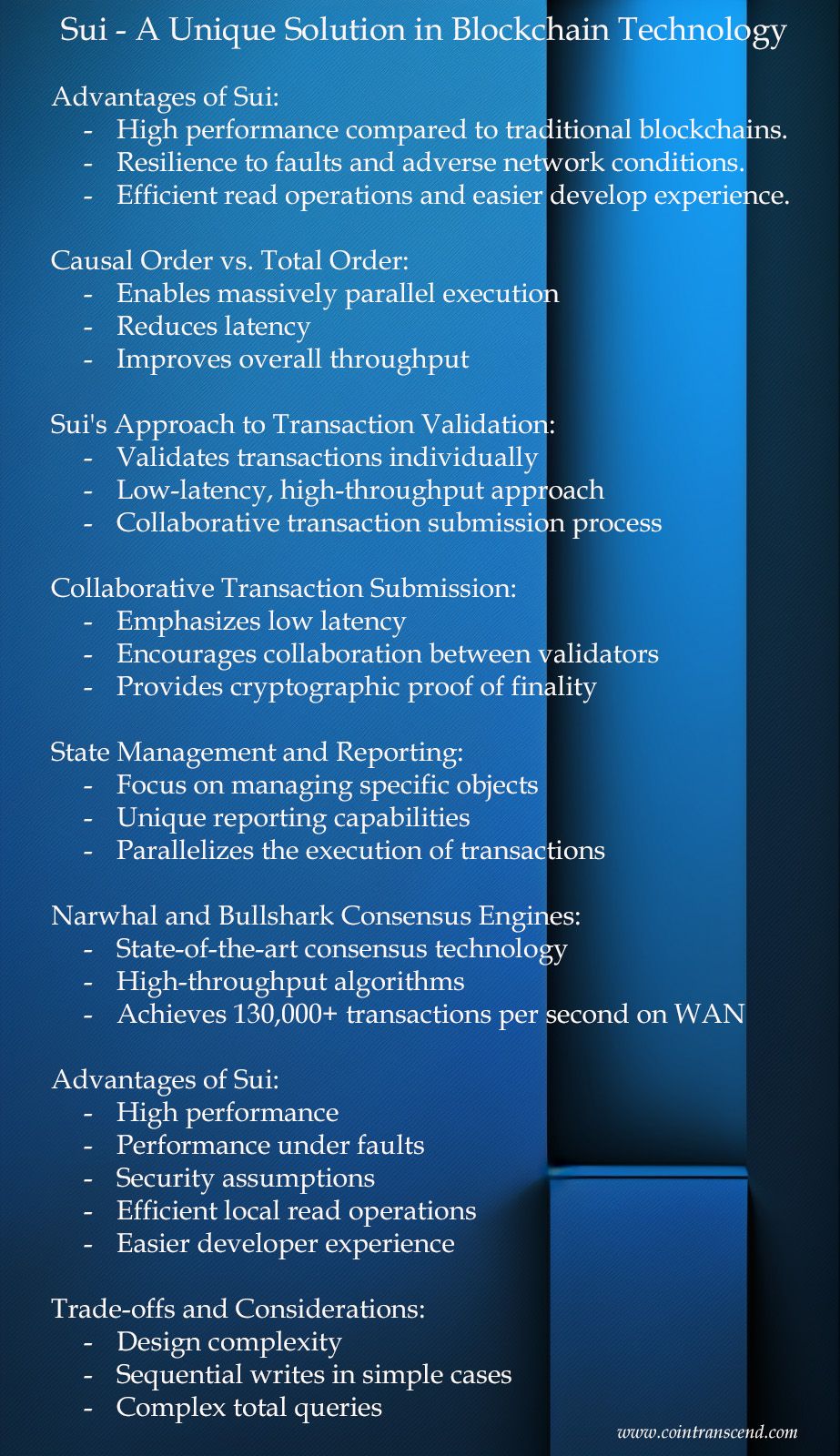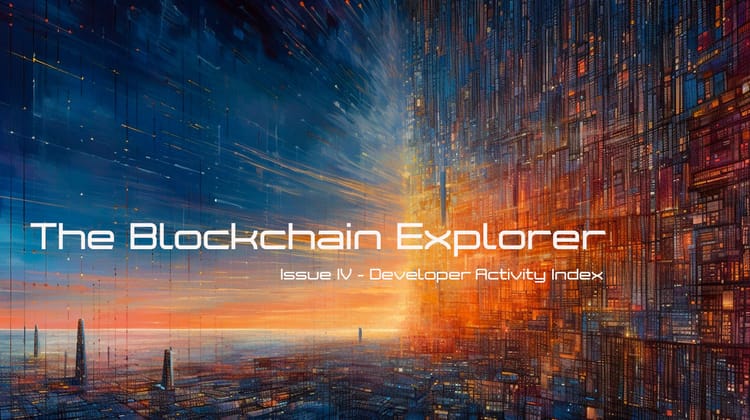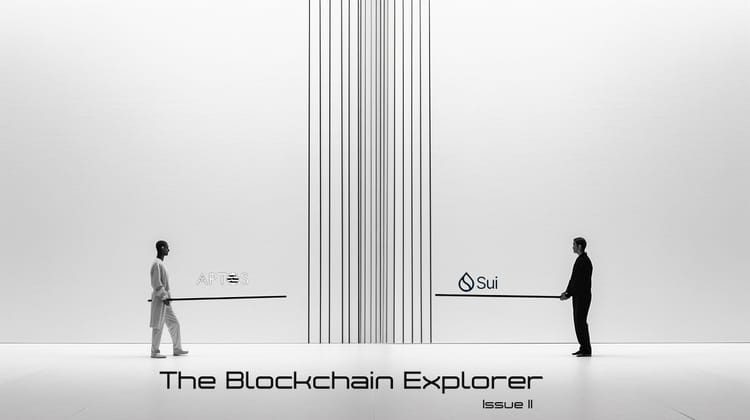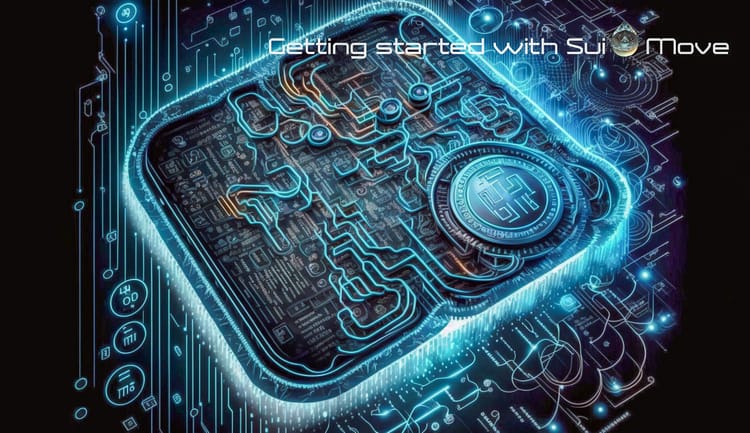A deep dive into Sui's unique architecture, key features, and advantages over traditional blockchains

Sui stands out as a unique solution that offers a multitude of benefits compared to traditional blockchain systems. It has emerged as a novel approach to transaction processing, addressing some of the limitations of traditional blockchain technology. In this article, we will explore the key features of Sui, how it differs from other blockchains, the benefits and trade-offs of adopting this novel approach. With a focus on causal order, parallel execution, and an object-centric data model, Sui is paving the way for a new era in blockchain technology.
Causal Order vs. Total Order: Enabling Massively Parallel Execution
Traditional blockchains operate with a total order of transactions, which inherently limits their ability to scale due to the sequential nature of the processing. Sui, on the other hand, employs a causal order for transactions, allowing for massively parallel execution. This approach enables Sui validators to process transactions that operate on disconnected parts of the state simultaneously, reducing latency and improving overall throughput.
Sui's Unique Approach to Transaction Validation
Instead of batching transactions in blocks, Sui validates transactions individually, offering a low-latency, high-throughput approach. The transaction submission process is more involved, with several steps that include broadcasting transactions, collecting validator votes, and achieving finality. This collaborative approach allows for a faster, more efficient transaction processing experience.
Collaborative Transaction Submission
Sui employs a unique transaction submission process, which emphasizes low latency and collaboration between validators. Although this method is more involved than traditional blockchains, it can still provide a cryptographic proof of finality with minimum latency.

State Management and Reporting
Sui's focus on managing specific objects, rather than a single aggregate of state, enables unique reporting capabilities. Each object in Sui has a unique version number and a causal history, which can be easily accessed and compared when necessary. This causal order allows Sui to parallelize the execution of transactions and achieve better performance than traditional blockchains.
Narwhal and Bullshark: State-of-the-art Consensus
Sui employs Narwhal and Bullshark, the latest variants of multi-proposer, high-throughput consensus algorithms. These engines enable Sui to achieve throughputs of more than 130,000 transactions per second on a wide area network (WAN), with production cryptography and a scaled-out primary-worker architecture. This consensus technology represents the cutting edge in terms of performance and robustness.
Advantages of Sui:
- High performance: Sui's approach to parallel transaction processing and its use of causal order significantly enhance its performance compared to traditional blockchains.
- Performance under faults: Sui's leaderless protocol ensures that faulty validators have minimal impact on overall performance.
- Security assumptions: Sui maintains its security properties even under adverse network conditions, making it more resilient than many traditional blockchains.
- Efficient local read operations: Sui's unique approach to reading data allows users to perform authenticated reads at low granularity and low latency.
- Easier developer experience: With its Move language and object-centric data model, Sui simplifies the development process for blockchain applications.
Trade-offs and Considerations
While Sui offers many advantages, there are some trade-offs to consider:
Design complexity: Sui's architecture and dual-protocol approach require a larger codebase and more maintenance compared to traditional blockchains.
Sequential writes in simple cases: Sui's multi-lane processing may lead to head-of-line blocking for simple transactions, requiring quick finalization.
Complex total queries: Sui's lack of total order for transactions can make total queries more difficult, although this is mitigated by the use of checkpoints.
Conclusion
In conclusion, Sui represents a significant step forward in the evolution of blockchain technology. Its focus on high performance, efficient local read operations, and an easier developer experience sets it apart from traditional blockchains and offers numerous benefits for a wide range of use cases. The unique features of Sui, such as causal ordering, an object-centric data model, the Move programming language, and state-of-the-art consensus engines, enable the platform to deliver high throughput, resilience, and scalability.
Adopters of Sui can expect to see improved performance and a more intuitive development experience, allowing them to create innovative applications and solutions on the Sui platform. However, they should also be prepared to tackle the challenges posed by more complex total queries, which may require additional effort compared to traditional blockchain systems.
Overall, Sui demonstrates the potential for continuous innovation and growth within the blockchain industry, pushing the boundaries of what is possible and opening new doors for developers and users alike. As the technology matures and gains adoption, it is likely to play a significant role in shaping the future landscape of decentralized systems and applications.
Please share your thoughts on the article by clicking below Emoji ...
Reference : sui-compared
Disclosure
*The information provided on this cryptocurrency blog is for educational and informational purposes only and should not be construed as financial, investment, or trading advice. The authors, contributors, and administrators of this blog are not licensed financial professionals and do not hold any formal qualifications in the fields of finance, economics, or cryptocurrencies.
The content on this blog is based on the authors' personal opinions, experiences, and research, and should not be considered as professional financial guidance. While we strive to provide accurate, up-to-date, and reliable information, we cannot guarantee the accuracy or completeness of the information presented. Cryptocurrency markets are highly volatile, and investments in cryptocurrencies and related assets carry a substantial risk of loss.
Before making any financial decisions or investments, you should consult with a qualified financial advisor or perform your own research and analysis. Any actions taken based on the information provided on this blog are at your own risk, and the authors, contributors, and administrators of this blog cannot be held liable for any losses or damages resulting from the use of the information found herein.
By using this blog, you acknowledge that you have read and understood this disclosure and agree to assume full responsibility for any decisions or actions you take based on the information provided.*








